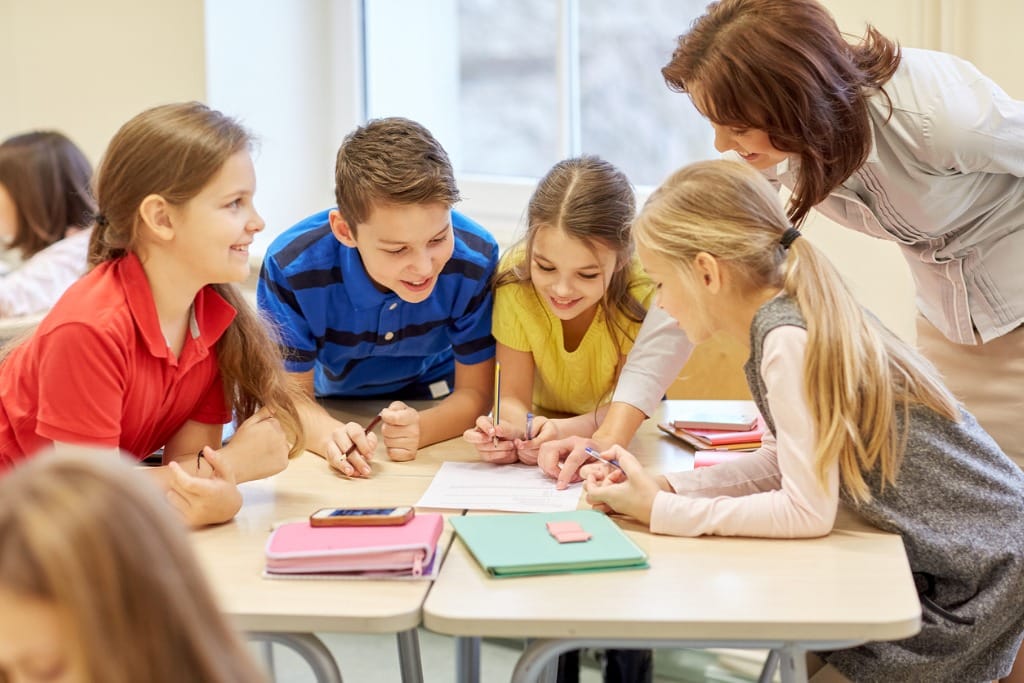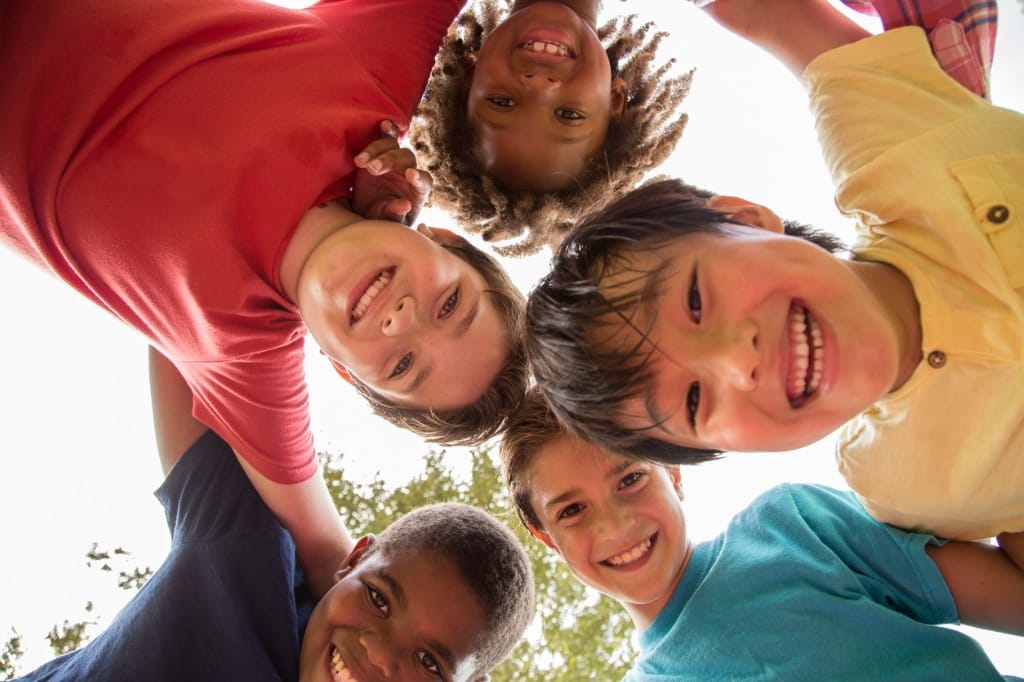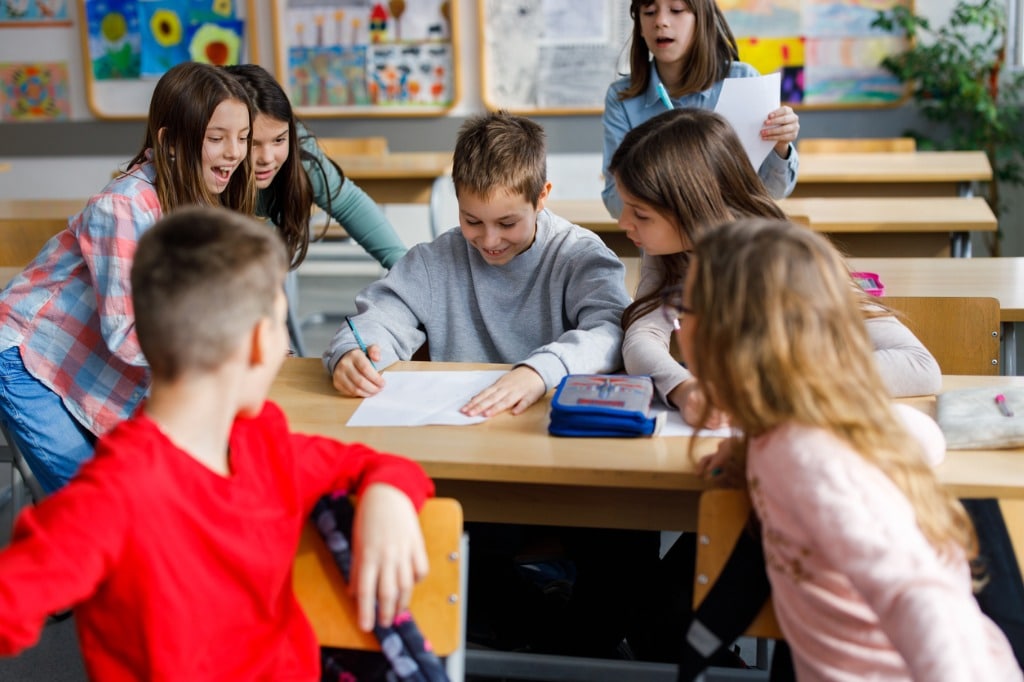 Social-emotional learning (SEL) is the process of acquiring and applying all the knowledge, skills and attitudes needed to…
Social-emotional learning (SEL) is the process of acquiring and applying all the knowledge, skills and attitudes needed to…
- develop a healthy identity.
- manage emotions.
- achieve personal and collective goals.
- build strong positive relationships.
- feel and show empathy for other people.
- make caring and responsible decisions.
- develop a growth mindset.
- celebrate cultural diversity.
It includes many non-academic lessons teachers already provide their younger students but seeks to do this intentionally with clear goals in mind. We’ve put together a collection of eight SEL lessons and activities to help you promote this learning philosophy in your elementary school classroom.
Social-Emotional Lesson Plans for Self-Awareness
Self-awareness is one of the most important traits a person can have. It helps people evaluate themselves and appropriately communicate emotions. It is crucial to instill self-awareness in your students from a young age to promote positive mental health. These lesson plans focus on ways to develop self-awareness in the classroom.
Emotion Words
The first step for students to process emotions in a healthy and socially acceptable way is for them to learn to identify their feelings with more nuance than just “happy,” “sad” and “mad.” While these primary emotions are a good starting point, your students will benefit from describing their feelings more precisely.
Start by asking students to explain the nuance between two similar emotions. How is being cheerful different than being thrilled? What’s the difference between being annoyed and furious? Then, ask your students to determine what other emotions are similar to each other.
After this introduction, have your students reflect on different emotions. Give students an emotion-word prompt, such as “offended,” “joyful,” “startled,” “disappointed” or “glad.” Then, give them five minutes to reflect on a situation where they felt that emotion and think about why they felt that way.
Once your students have reflected on several emotion-word prompts, discuss with them the difference between “small emotions” and “big emotions.”
Different situations will make us feel different emotions proportionate to the situation. Being specific about feelings and using the right words will help others understand what we’re feeling and allow them to help us more effectively.
 Student Strengths
Student Strengths
Awareness of personal strengths helps students build self-confidence and prepares them to handle difficult life situations. This lesson helps students create an artistic representation of their strengths in the form of a flower. Once your students create their flowers, they can put them on the classroom wall to make a classroom garden showing off all the strengths of the entire class.
Explain to students that everyone has different strengths: things that we’re really good at that we can use to improve ourselves and the people around us.
Pass out blank pieces of paper and have your students draw a circle, which will be the center of the flower. In the center, have them write their strength (something like, “I’m good at making people laugh,” or “I’m good at helping people figure things out.”). Then have students draw petals branching out from the center of the flower.
On each petal, they should write about a time that they used their strength. One petal might say, “I used my strength to help my friend put together a puzzle,” and another could say, “When I used my strength, my friend was happy I helped solve the puzzle.” Students can make as many or as few petals as they want.
Once your students finish their flowers, have them put them up on the wall. Encourage students to read their classmates’ flowers to learn about each other’s strengths before returning to their seats.
This project is also a perfect choice for a classbook project! All of your students’ flowers can be combined into a single book and published as a keepsake for you, your students and their families! Just make sure to use glue, not tape, when submitting your class’s flowers for publishing!
Are you Enjoying this Content?
Social-Emotional Lesson Plans for Self-Management
Emotional literacy and regulation is a crucial skill to effectively interact with other people. These social-emotional learning activities focus on ways to help your students learn how to manage themselves and their emotions better.
Brain Breaks
When your lessons lose momentum and your students are not participating, these are signs that your students are having trouble processing the lesson. Rather than trying to push through the wall everyone’s up against, you may consider giving everyone a “brain break.”
Switch activities for a while to give students some time away from focusing on the lesson, and they’ll come back to work ready to focus again and make new connections. If you plan ahead and build brain breaks into your lesson from the start, you can avoid disengagement by giving students proactive breaks instead of reactive breaks.
Physical breaks give students a chance to focus on moving around after a long period of sitting still. Exercise improves student concentration and peer interactions and increases academic achievements. Physical breaks can be as simple as leading students through a series of stretches or brief cardio, such as jogging in place or jumping jacks.
Mindfulness breaks help students slow down after high-energy activities or discussions that lead to high emotions. These breaks can help calm and recenter the class, and it allows for some time devoted to processing after extended periods of learning. Mindfulness breaks include silent meditation, journaling or reflection, stretching or sensory experiences.
Social breaks are about engaging in connectivity and collaboration. Different from free time, these activities foster teamwork, develop problem-solving strategies and communication skills. Social breaks can be mini-games, structured casual conversations or puzzles.
Good brain breaks include cooperative play activities, such as throwing a beach ball around the classroom, making up a dance or following the leader.
Affirmation Cards
Positive self-talk, sometimes referred to as affirmations, is essential for building self-esteem and overcoming doubts. Helping students focus on words that create a positive mindset and confidence gives them the tools they need to overcome the inner voice that says, “I can’t.”
Affirmation cards expand the idea of focusing on positive thoughts by first identifying students’ beliefs about themselves and then using those beliefs to build a set of cards they can use whenever they need to transition to a more positive attitude.
- First, students draw a picture of themselves surrounded by thought bubbles. In the bubbles, they write beliefs about themselves.
- If students have trouble coming up with beliefs, try asking them, “What are some positive things you associate with yourself?” “What are some positive things other people have said about you?” “What compliments do you often receive?”
- Next, students will use their positive beliefs to create a set of three to five affirmation cards by writing their beliefs on the cards and decorating them with drawings, stickers or whatever craft supplies are available.
- Finally, students can affix the cards to their desks, to their student laptops, to their mirrors at home or anywhere else they’ll see them often and can benefit from the positive self-talk.
 Social-Emotional Lesson Plan for Social Awareness
Social-Emotional Lesson Plan for Social Awareness
Social awareness is necessary to maintain appropriate levels of privacy in different social situations to prevent discomfort and contribute to personal safety. This SEL activity focuses on ways to develop social awareness in your classroom.
Communication Skills: Appropriate and Inappropriate Topics
This activity can be completed as a group discussion or by students answering individually and then discussing afterward to gauge understanding. Ask your students the following questions.
- “What’s the difference between a friend and a stranger?” and “What’s something you can tell a friend but not a stranger?”
- “What’s the difference between a friend and your family?” and “What’s something you can talk about with your family but not a friend?”
During the discussion, help students understand that there is a right time, place and person for each conversation and that it’s important to think about whether the conversation you want to have is suitable for the person you’re talking to.
Give several examples of topics, such as vacation plans, funny jokes or embarrassing stories, and discuss with your students whether it’s something they should tell their family, a friend, or a stranger.
Lesson Plan for Relationship Skills
Relationship skills are essential to developing a habit of social give-and-take that will result in happy and fulfilling relationships that are mutually beneficial for all parties involved. This lesson plan focuses on ways to develop your students’ relationship skills.
How to Be a Good Friend
Making friends can seem easy to young children. When they go to the playground and join others on the swings, the kids on the swings become their friends. Developing friendships gets more complex as students grow and start to develop preferences for specific activities and interests.
Encouraging children to reflect on what qualities they think make a good friend will help them develop healthy peer relationships.
Have students write their own personal ad for a friend. The ad should list the qualities they would like in a friend and include the qualities they possess and they think would make them good friends. Invite students to discuss the qualities they look for in their friends in groups or with the whole class.
It’s important to emphasize to your students that there is no list of ideal qualities that all good friends have. Friendship is based on what they want from other people and what they’re willing to do in return.
Additionally, make sure they understand that having different interests doesn’t mean they can’t be friends. For example, if someone doesn’t like sports, they probably won’t want to watch a baseball game, but maybe they’d like to go to the park and climb trees.
Social-Emotional Lesson Plans for Responsible Decision-Making
Needless to say, the ability to make responsible and informed decisions is critical to success in life and helps with conflict resolution. The following academic social and emotional lesson plans will help teach students how to make good decisions and think before they act.
Good Choices
Being able to follow the rules is a critical part of interacting with other people in society. Knowing why the rules matter and what might happen if we didn’t have rules makes students more likely to make good choices. No one, especially young children, likes to hear the words “we do it because it’s the rules.”
Have the students list the rules of the classroom out loud, and, for each rule, ask “Why do we have that rule?” and “What would happen if we didn’t have the rule?” Then, lead the students in further discussion about other rules they have at school and home. You can even discuss some laws if you feel they are applicable.
Have them discuss why those rules are in place and encourage them to think about the reasons behind the rules. Now have your students go even deeper in their thinking. Ask them to imagine a world where people were always considerate and thought about others to make the best choices.
Have your students choose a rule they personally feel is important. On a blank piece of paper, have them write the rule and then draw an illustration showing how that rule is beneficial. After your students finish, invite them to stand up and share their drawings with the class.
This classroom activity is another perfect candidate for a classbook project. Once everyone is finished writing about their rules and drawing their illustrations, publish their work with one of our free classbook publishing kits for the rest of the school to see!
Goal Setting
We often encourage students to have big dreams and ambitions, but most don’t understand how to set goals and make plans to help their dreams come true. Explain to students that if they want to achieve a goal, they have to identify the steps they can take to achieve that goal.
If a student wants to be a sports star, for example, that means more than just showing up to play in the games; they’ll need to get equipment, learn to play the sport and practice consistently. Developing these skills will improve their chances of getting what they want. Have students practice goal setting by…
- …writing down their goal.
- …thinking about what steps they can take to achieve their goal.
- …writing down their plan.
- …following their plan.
Help students understand that the most effective plans have steps that are specific, measurable and achievable. If a student wants to play baseball, and the only action they’ve listed is “join the baseball team,” they should think about the steps they’ll need to complete to join the team.
If a student wants to be a movie star, and they’ve listed the step “move to California,” they should consider whether they can make that step happen or whether it makes more sense to focus on things that are in their control at this time.
This is a great project to take part in at the beginning of the year, so you can periodically check in on your students’ progress as the school year continues.
Classbook Publishing Kits from Studentreasures
Building strong social-emotional skills is one of the most critical things a person can do. Developing these skills early on in your students’ lives is a great way to increase their potential for future success, including better economic standing, more fulfilling relationships and overall happiness.
Studentreasures offers free classbook publishing kits that promote collaboration in the classroom, as each student has to contribute work to the book to make a fantastic final product. These classbooks serve as excellent mementos and reminders of the fun times had in the classroom during the year and will help students build their SEL skills.






